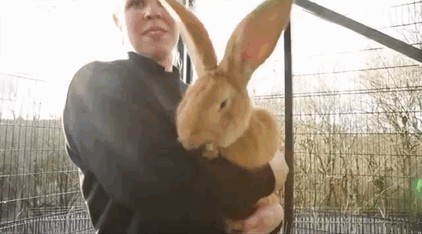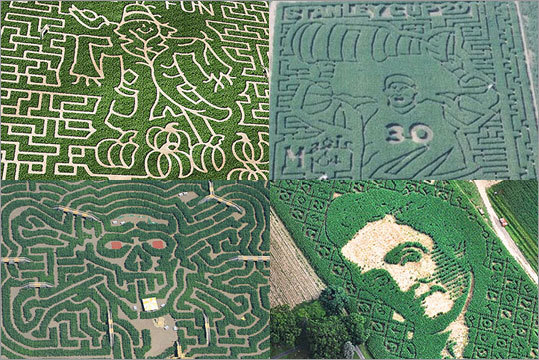I believe the corn people tend to eat as corn are different varieties from those used to make pop corn, though.
Yes maze is sweet corn. What I was wondering is pop corn any different or is it just dried maze kernels?
Correct. There’s sweet corn (people eat this off the cob or sometimes frozen/canned/etc), field corn (animal feed and processed for corn meal as a food ingredient) and popcorn. And there are varieties within each of those types as well as harvesting differences (e.g. sweet corn is harvested when the kernels are finished forming, field corn gets harvested when the ears dry and fall off the stalk).
Popcorn is, as I understand it, normal corn that’s harvested at the right moisture point (whatever that is). So it seems like a similar scenario to how ice wine is made when the grapes are picked at the exact right frost point.
Nope. Sweet (eating) corn is different. Popcorn is actually a sub-species of Flint Corn which is the stuff that Americans used to call maize - or Indian Corn. It’s a harder shelled corn and the non-popcorn varieties of Flint corn are pretty much only decorative in the U.S (not sure how it’s used in South America where it’s also still grown).
Popcorn varieties are unique in the balance of starch, moisture and shell (hull) thickness that allows the moisture to build up when heated until it pops. Other corn (field corn) can also heat up and form steam but the hull doesn’t give way like popcorn - it breaks slower (and earlier) so it’s more of a flabby puff vs a pop.
Sweet corn is almost all starch and won’t pop.
BTW, there’s sweet corn and Sweet corn. Human corn-on-the-cob eating corn is Sweet corn. Some of that Sweet corn is also sweet corn…and other varieties exist as well…super-sweet, butter sugar, different white corns, etc. all with different levels of sugar & sweetness.
(Mis-spent summers on the farm with my grandparents and cousins…send the city boy out to pick corn…to the field corn field ![]() )
)
Oh, perhaps I wont bother trying to laser it then. And spell it maize from now on. 
I see. I must have confused the process with the corn itself. I found something that describes why I probably thought that…
“The growing and harvesting processes are the same for popcorn and field corn. The main difference is that we have a very particular moisture level at which the popcorn is harvested. It’s important that it’s not too wet or too dry – as with either extreme, it won’t pop.”
yep - not all that straightforward and pretty esoteric anyway.
It’s imprinted on me because of being sent on the corn equivalent of snipe hunts*. Not a lot to amuse the country cousins but they sure love tweaking their city visitors 
(*I have never been on a snipe hunt though I have sent people on them.)
haha, i have taken my share of unnecessarily specialized biology courses.
you misunderstand. i’m not at all worried about safety - i’m “worried” about making disgusting food. 
And then there’s the corn palace in South Dakota, which is decorated with new huge murals each year using only differently colored corn.
I actually want to fully cut rolled fondant for use on cakes and what not. Not a novelty at all  Along with a ton of other ideas I have including making silicone pattern rollers, but in the food department that is the one thing I want to try. Any beta users up for that?! or @dan you can send me my unit and I’ll go to town lol
Along with a ton of other ideas I have including making silicone pattern rollers, but in the food department that is the one thing I want to try. Any beta users up for that?! or @dan you can send me my unit and I’ll go to town lol 
i’ve also been thinking of food-adjacent projects, like stands and the like.
It is so cool to see this at the height of summer 
Chasing a HUGE rabbit here, so be forewarned.

While on a Native-American study kick a few years ago, I found corn a very interesting part of the mystery of the pre-Colombian new world. Most people tend to picture Native Americans in a very basic, live-by-the-seat-of-your-pants, leave no mark behind, don’t mess with nature, kind of way. But corn shows just how inaccurate that way of thinking is. Though we have a few guesses, we can’t even tell for sure exactly what plant Corn came from. It has been so extensively modified that it can’t grow on it’s own (it has to have human intervention). And, by the way, the genetic modification occurred before Columbus ever arrived on these shores. It may be one of the greatest losses in Human history, but whatever pre-colombian society was like in the new world, we only see a very faded shadow of that now. The “Indian history” that is taught in school is nothing more than stories of societies and a world that had already come crashing down and was busy trying simply to survive.
Big rabbit…really big rabit 
Amazing maize mazes!! ![]()
Why cant it grow without human intervention?
We just plant kernels in small pots in the greenhouse and then plant them out in a grid. They are wind pollinated so all we do then is wait and harvest. Does it need humans to take the kernels off the cob and plant them?
Yes. That’s the problem. You can plant a field of corn and just let it go to seed, but it won’t. It will simply die and rot.
Edit: An interesting read is Charles C. Mann’s “1491.” Discusses a lot of the myths regarding the ealiest “American” civilizations, including the “Indian” cultures of North America.
That is one of the things about the whole GMO/non-GMO thing. Basically all of our produce and plants are GMO, be that through selective cross-pollination and planting. Few are as bad off as corn, being cultivated to the point of needing human intervention to keep it alive, but they all are GMO, just not all lab GMO.
Let us pause for a moment and remember Norman Borlaug and his amazing exploits at feeding the world. Quite a bit at odds his story with more recent understandings of sustainability (trying to avoid the GMO quagmire here)
The history of maize cultivation is absolutely amazing. That it was bred into total dependence on humans for cultivation and that it requires processing to eat (at least the dried corn). Absolutely the most un-natural food around. Part of the reason it gets such a bad rap, much like wheat. But the flavors of Mexican corn are amazing as dried.
And then there is nothing like fresh sweet corn straight from the field. It is worth a trip to the US if you have never had it before. Come in late July when tomatoes and corn are going strong.
Popcorn is definitely a distinct variety that was grown for the popping. And yes, 1491 is a must read book.
Here is to the Western Hemisphere for its food: peppers that followed the equator and gave the red heat to so many cuisines. Potatoes that quickly became the staple of nations. Tomatoes. And so many others. Raymond Sokolov in Natural History magazine around the 1992 anniversary wrote an amazing series of articles about the foodways that came from the Americas.
I once tried to do an authentic medieval banquet using only foodstuffs from 12th Century England. Rather boring it was.

